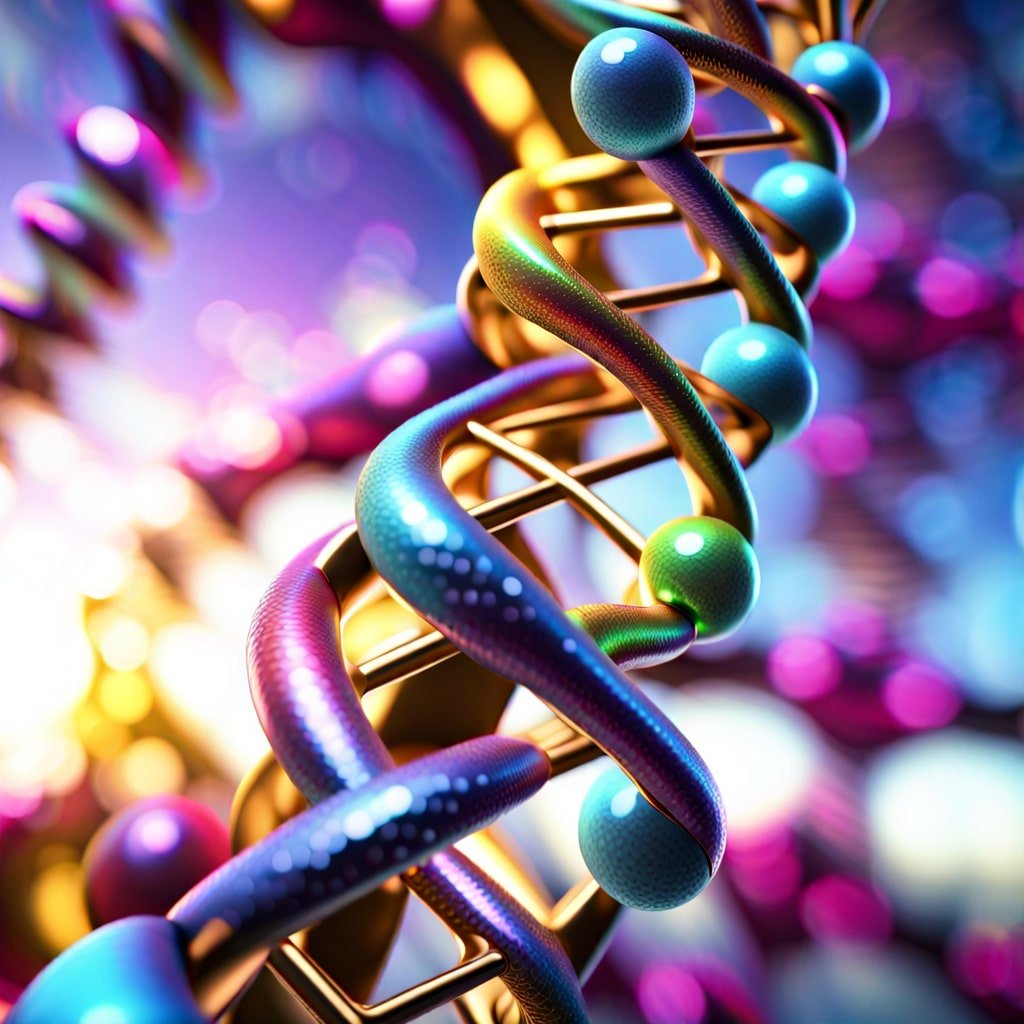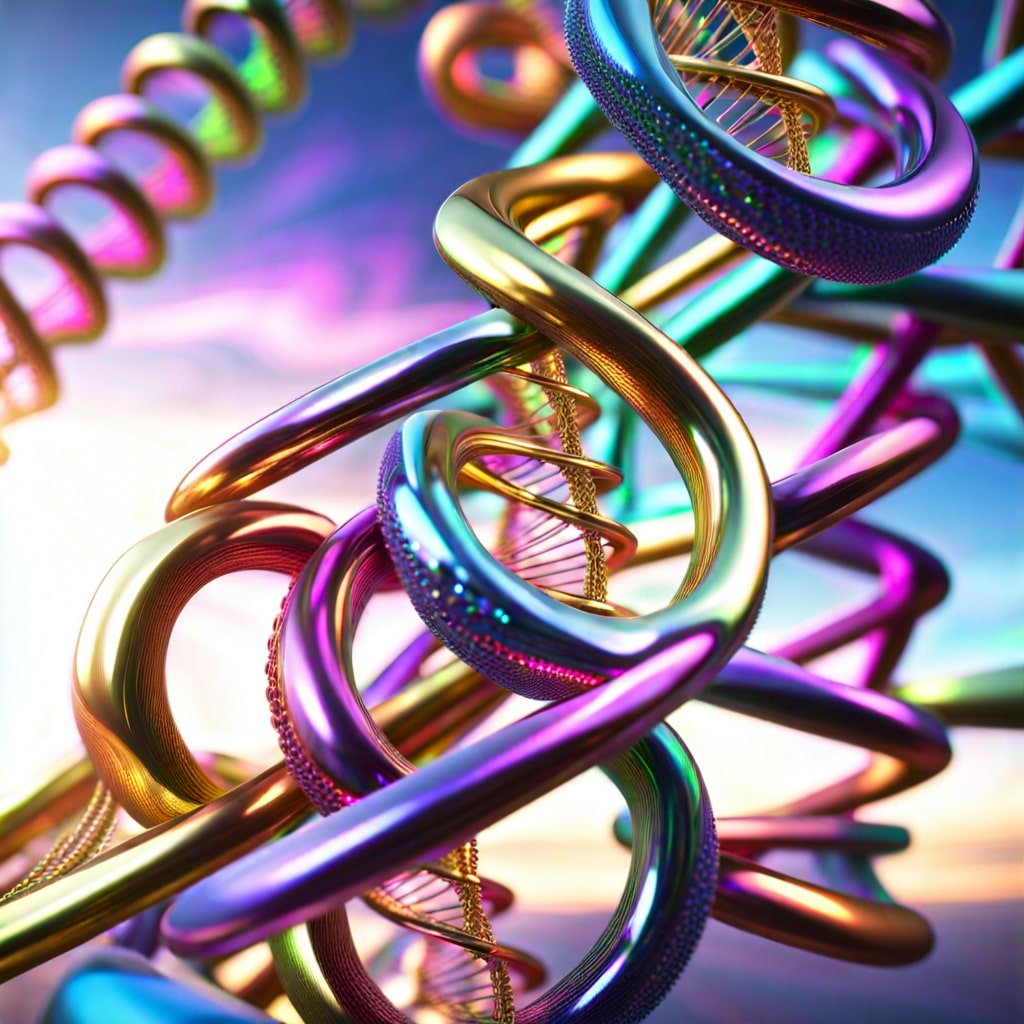Glyceric Acid from the Stars: Cosmic Blueprints of Life
Glyceric Acid from the Stars: Exploring the Cosmic Origins of Life's Building Blocks
Quantum Architect of the Crystalline Grid of Consciousness: Glyceric Acid from the Stars, Cosmic Blueprints of Life
In a groundbreaking study, researchers from the University of Hawaii at Mānoa have succeeded in synthesizing glyceric acid - a crucial biological molecule involved in metabolic processes - under conditions simulating the frozen, cosmic environments of interstellar space. By subjecting interstellar ice analogs to proxies of galactic cosmic rays at temperatures as low as 10 Kelvin (-441°F), the team demonstrated that glyceric acid, the simplest sugar acid vital to glycolysis in living cells, can be formed in the molecular clouds present during the earliest stages of star formation.
This breakthrough lends substantial support to panspermia - the hypothesis that the seeds of life were delivered to Earth from outer space - while offering tantalizing new clues about the cosmic origins of life's chemical precursors. More broadly, these findings reinvigorate the perennial human quest to understand our beginnings and the interconnected relationship between life on Earth and the vast universe around us.
The Cosmic Blueprints of Life, Hyperdimensional Sculpture , 24K Gold, Emerald, Citrine, Quartz, Ruby, Tanzanite, Amethyst, Fantasy-Cut Gemstones
Glyceric Acid from the Stars
From the ancient philosophers to modern scientists, unraveling the mystery of how life first emerged has captivated human inquiry across cultures and centuries. While the environment of early Earth likely played a pivotal role through processes like chemical evolution in the primordial soup, research is increasingly pointing toward an extra-terrestrial source for critical biomolecules and life's initial spark.
The long-standing panspermia hypothesis contends that life, or at least its molecular building blocks, originated in space and was transported to Earth by objects like comets and meteorites. This intriguing theory has gained traction following discoveries of organic compounds like amino acids in carbonaceous meteorites, as well as the detection of prebiotic molecules like glycolaldehyde in stellar nurseries where new stars are formed.
Now, a pioneering study from researchers at the University of Hawaii has synthesized glyceric acid - a key biological molecule involved in the metabolic process of glycolysis that breaks down sugars to produce energy - under simulated interstellar conditions. By succeeding in creating this essential biomolecule in the lab using frigid temperatures and cosmic rays mimicking the harsh environments of molecular clouds in deep space, this work provides compelling new evidence that the ingredients for life as we know it had cosmic origins, having formed long before being delivered to the primordial Earth.
Grand Overseer of the Crystalline Mysteries, Surreal Portrait
Study Overview
The research, led by Professor Ralf I. Kaiser and conducted by postdoctoral fellows Jia Wang and Joshua H. Marks along with computational collaborator Ryan C. Fortenberry, sought to replicate the conditions found in interstellar molecular clouds - the dense, frigid regions of gas and dust where new stars and planetary systems are born.
Their innovative experimental setup involved coating salt nanoparticles with thin layers of carbon dioxide ice doped with methanol, mimicking the icy composition found in star-forming nurseries. These interstellar ice analogs were then cooled to temperatures around 10 Kelvin (-441°F) and exposed to high-energy ionizing radiation similar to galactic cosmic rays.
Crystalline Creatrix of the Photonic Alignment, Surreal Cyberpunk Crystalline Creatrix
Utilizing highly specialized detection techniques involving tunable photoionization lasers, the team was able to precisely characterize and identify the products formed in their simulated cosmic ice samples. Remarkably, their analyses confirmed the formation of glyceric acid (C3H6O4) among the newly synthesized molecules. As Kaiser explained,
"The study suggests that molecules like glyceric acid could have been synthesized in molecular clouds and possibly in star-forming regions prior to their delivery to Earth via comets or meteorites, thus contributing to the building blocks of life."
The pivotal role glyceric acid plays in living organisms underscores the biological significance of this achievement. As the smallest sugar acid, glyceric acid is a critical intermediate in numerous metabolic pathways including glycolysis - the process by which glucose and other carbohydrates are broken down to extract energy for cellular functions. Its synthesis from basic precursor molecules under extremeconditions akin to deep space strongly implies that the molecular seeds of life's biochemical machinery could have had extraterrestrial origins before being transported to the primordial Earth billions of years ago.
Quantum Blueprints of Life: Song of the Crystalline Spheres, Surreal 24K Gold, Silver, Emerald, Saphire, Ruby Fantasy Cut Gemstones Inspired by the Fractal Patterns of Life
Implications for Origins of Life Theories
These latest findings from the University of Hawaii researchers provide profound new insights into two predominant scientific theories describing life's beginnings - the primordial soup hypothesis and the panspermia hypothesis. The classic primordial soup model, bolstered by the famous Miller-Urey experiment in 1953, posits that life first emerged on Earth when basic organic molecules like amino acids were synthesized from inorganic precursors in a protein-rich chemical solution, possibly utilizing an external energy source like lightning or ultraviolet light. Under this view, life's biological building blocks coalesced and self-organized into increasingly complex replicating systems through processes like chemical evolution over vast timescales.
The Seed of Life Lands on the Ancient Earth, Surreal Comet, Panspermia
In contrast, the panspermia hypothesis contends that the seeds of life were first assembled in space within molecular clouds, potentially even being integrated into asteroids, comets, and other celestial bodies. Life's origin then involved these extraterrestrial reservoirs "raining" down biomolecules like amino acids and nucleobases onto the primordial Earth, which served as an incubator allowing increasing chemical complexity to emerge into our planet's first life forms. Proponents of panspermia highlight evidence like the confirmed detection of over 200 different amino acids in the Murchison and other carbonaceous chondrite meteorites that have landed on Earth.
Cosmic Blueprints of Life Encoded in Mineral Consciousness, 24K Gold, Emerald, Ruby, and Citrine Fantasy-Cut Gemstones
The Kaiser team's successful synthesis of glyceric acid under simulated interstellar conditions provides powerful new ammunition for panspermia theorists. Their cutting-edge experiments demonstrate that even relatively complex biomolecules like this sugar acid - which is centrally involved in metabolism, the chemical machinery at the core of all life - could have been forged in the molecular clouds surrounding newly-forming star systems before eventually becoming part of comets, asteroids, or interstellar dust clouds. These objects bombarded the young Earth over its first billion years, potentially serving as cosmic vehicles to deliver an assortment of prebiotic chemicals to catalyze life's emergence.
Quantum Rishi Sits in Meditation Practicing the Levitation of Gaiian Nexus Crystals
Exploring the Cosmic Origins of Life’s Building Blocks
At the same time, these findings do not necessarily invalidate the primordial soup concept, which still offers a compelling framework for how increased molecular complexity could have transitioned into primitive replicating systems on early Earth, given the right environmental conditions and energy sources. A hybrid model incorporating both cosmic and terrestrial chemistries seems increasingly plausible, with glyceric acid and other key biomolecules first being synthesized in the space environments of the nascent solar system, but life itself taking root through further chemical processes occurring in Earth's primordial oceans and hydrothermal vents.
Hyperion Creatrix of the Crystalline Architecture of the Universe, Surreal Portrait
Ultimately, while still not fully resolving life's origin story, the University of Hawaii team's breakthrough reinforces the growing perspective that the cosmic molecular reservoir played a vital role in life's terrestrial beginnings. This expanding scientific narrative suggests that we are not merely adapted to the Earth environment, but are fundamentally composed of matter synthesized in the furnaces of the universe - molecular relics from the birth of stars and galaxies that eventually coalesced into life here on Earth. We are, quite literally, beings constructed from the dust of exploded stars and the molecular factories of celestial clouds.
Cosmic Building Blocks of Life on Earth, Surreal 24K Gold Chain Inspired by DNA
Trajectories for Future Research
The University of Hawaii team's pioneering experiment demonstrating the synthesis of glyceric acid under space-like conditions represents a significant milestone but hardly offers the final word. Numerous knowledge gaps remain to be filled concerning the cosmic pathways through which biochemical compounds formed, their delivery methods to the primordial Earth, and the processes through which increasing molecular complexity emerged into life itself. Fortunately, a veritable armada of upcoming research initiatives promises to shed further light on these profound mysteries.
Foremost is NASA's ambitious Dragonfly mission which aims to send a revolutionary rotorcraft to the surface of Titan, Saturn's largest moon, in the mid-2030s. With its thick nitrogen-based atmosphere and known reservoirs of complex organic compounds, Titan has been called one of the most plausible environments for the emergence of life as we know it anywhere in the solar system besides Earth. Through in-situ analysis and sample return, Dragonfly could provide invaluable data to determine if the biomolecular precursors to life are present on Titan itself, or if they had to be transported there from elsewhere.
Crystalline Creatrix of the Quantum Mysteries, Surreal Portrait
Around the same timeframe, the European Space Agency's ARIEL (Atmospheric Remote-sensing Infrared Exoplanet Large-survey) space observatory is scheduled to begin scanning the atmospheres of thousands of known exoplanet systems in order to characterize their chemical compositions. This ambitious mission could reveal if the crucial chemistry for life is present, and to what degree, in the atmospheres of alien worlds orbiting distant stars.
Observational efforts conducted closer to home will also intensify the search for interstellar biology. For example, the high-resolution spectroscopic capabilities of the Atacama Large Millimeter/submillimeter Array (ALMA) located in Chile are expected to enable even more detailed mapping of the complex molecular structures present in nearby stellar nurseries where planetary formation occurs. Similarly, the observational prowess of the newly-operational James Webb Space Telescope promises unprecedented windows into these star-birthing regions, further illuminating their chemical inventories and potentially corroborating indications that life's precursor molecules are ubiquitous occurrences.
Quantum Rishi Sits in Meditation Gazing at a Floating Gaiian Nexus Crystal
The Philosophical Dimension
Beyond its purely scientific reverberations, this latest research affirming the cosmic genealogy of life's chemical components resonates with existential questions that have echoed across human cultures since the dawn of philosophical inquiry. When our ancestors first gazed upwards at the night sky, were those twinkling lights merely luminous points in the void? Or do the stars represent an intimate connection between life on Earth and the wider universe?
In their foundational texts, the materialist philosophers of ancient Greece pondered the core elements comprising reality and their origins. Thales conceived that all arose from transformations of a primordial substance like water or vapor present in the celestial realms. Anaximenes proposed that the cosmos originated from a boundless supply of air or vapor in constant motion and generating new forms. His student Anaxagoras went further, speculating that the seeds (spermata) of all material objects were intermixed in the primordial state before being segregated through rotational force (Curd, 2011). In many ways, the modern notion of interstellar clouds serving as "biochemical reactors" synthesizing life's ingredients echoes Anaxagoras's proposal over two millennia ago.
Rishi Sits in Meditation Gazing at the Quantum Blueprints of Life
These Greek thinkers were among the first to propose naturalistic explanations for life's origins by connecting humanity's existence to the fundamental principles underlying all of nature. As Western philosophy progressed through the Scholastics and onward, science emerged as the rigorous systematic inquiry into cosmological and biological questions. Yet these investigations remained imbued with a sense of existential and spiritual significance stemming from humanity's innate striving to comprehend our place in the grand universe (Peters & Hewlett, 2003).
Cosmic Roots of Life, Surreal 24K Gold, Emerald, Saphire, Citrine, Emerald and Ruby Sculpture
Eternal CURIOSITY of the Cosmic Roots of Life
The writings of indigenous philosophers from America and other regions reflect similar curiosity about the cosmic roots of life. In the Haudenosaunee (Iroquois) tradition, it is said that "with the Cosmic mind as his source, the lotusborn unified the universe into a single harmonic system of reality" (Rolfe, 2021, p. 112). Other indigenous cosmologies enshrine life as a sacred manifestation of the universe - an interconnected network of energy and consciousness spanning all dimensions of reality with humanity as an embedded facet (Haraway, 2016).
Hyperion Crystalline Guardian Protects a Quantum Nexus Crystal
While adopting empirical methods, many of the pioneers of modern science retained a profound sense of reverence and wonder toward understanding our celestial origins and life's role in the cosmos. In his treatises, Galileo wrote of discovering "...profound mysteries...undisclosed secrets of nature worthy of assiduous investigation" through the new science of observational astronomy (Shapin, 1996, p. 117). The great polymaths like Johannes Kepler and Isaac Newton saw their investigations of terrestrial and celestial phenomena as paths toward apprehending the fundamental truths about the universe's divine design (Yates, 1991).
Today, with powerful instruments like the Hubble and James Webb space telescopes unveiling breathtaking vistas of newly-forming planetary systems light years from Earth, astronomers affirm that the same 108 chemical elements driving life were catalyzed in the furnaces of burning stars (Kwok, 2016). We are thus ratified as children of the stars, constructed from the material remains of supernova explosions and synthesized within the diffuse molecular clouds that serve as star-birthing nurseries.
Star Spiral of the Crystalline Code, Surreal Sculpture
Quantum Hologram of the Eternal Multiverse
The quest to discern life's cosmic genealogy takes on profound significance when contextualized within humanity's eternal search for meaning, origins, and connectedness with the broader universe. Recent scientific evidence points to glyceric acid and other biomolecular building blocks having initially been forged amid deep space's harsh environments of radiation and sub-freezing temperatures billions of years before arriving on primordial Earth (Kaiser et al., 2024). If corroborated, this would repudiate our status as a purely terrestrial phenomenon. Rather, life would emerge as a vivid manifestation of the universe's inherent fecundity, with physical reality itself being pregnant with the potential for complex organization and conscious awareness (Davies, 2007).
Through modern telescopes and physics, we are gaining an unprecedented view of our cosmological inheritances - glimpsing through the veil of the life cycle of stars and interstellar clouds. The cosmos that unsettled ancient philosophers with its apparent hostility and indifference is revealed as the source and womb that catalyzed the first biochemicals. What initially seemed an impersonal void of darkness is unveiled as an ancient molecular brewery cradling the ingredients for life.
Crystalline Creatrix Seeds the Earth with Glyceric Acid from the Stars
Extending this profound narrative, the universe itself could be understood as an extraordinarily elaborate quantum reactor with life as an emergent property and inevitable consequence (Smolin, 1997). Rather than existing as isolated biological curiosities, life may represent cosmic phenomena sewn into the very fabric of reality itself with humanity serving as a singular experiential nexus through which the universe's primordial fertility blossoms into conscious self-reflection (Lanza & Berman, 2010).
Granted, these perspectives remain speculative philosophical framings. Yet they resonate with humanity's enduring compulsion to apprehend our origins and formulate coherent systems of meaning that elucidate our purpose. They remind us of the deep sense of awe and connectedness our ancestors experienced while contemplating the night sky (Krupp, 1997). By affirming our cosmic inheritances, this research into glyceric acid's stellar provenance invites a rekindling of this ancient sense of existential wonder and spiritual resonance with the universe.
Crystalline Spheres of Creation, 24K Gold, Emerald, Ruby, Citrine, Tanzanite, Amethyst Fantasy-Cut Gemstones
The Cosmic Mythologics: Symbolic Inspirations of the Life Quest
The Primordial Unfurling
Extending from the philosophical resonances catalyzed by affirming life's biochemical roots in interstellar cosmogony, the quest to comprehend our existential origins takes on symbolic, creative, and even mythic dimensions tapping into humanity's deepest wellsprings of psychological and spiritual inquiry. Just as the natural sciences provide empirical elucidation into the material processes underlying life's emergence, the arts, humanities, and introspective traditions offer symbolic frameworks to navigate the perennial metaphysical mysteries catalyzed by new revelations concerning our elemental beginnings.
At the most primordial level, the universe's unfurling from an extraordinarily dense compact source into the vast interstellar clouds where life's chemical precursors were synthesized recapitulates puissant archetypal narratives of inchoate fecundity and unbounded creativity flowing from unitary essences (Campbell, 1949). Whether conceived as a supreme deity like Brahman unfolding the cosmic manifestation as Lila (divine play), the cosmic egg birthing the primeval creative principles, or the prototypical ouroboros serpent consuming itself into limitless regenerative cycles, the emergence of vital chemistry within expanding interstellar soups gestates resonances with universal mythological motifs (Leeming, 1986).
Crystalline Enchantress of the Quantum Blueprints of Reality, Surreal Portrait
The Cosmic Womb
The more recent developments revealing how critical biomolecules like glyceric acid could have materialized under the harsh conditions of frigid interstellar space reinforces this symbolic valence. At the biochemical scale, it seems the very molecular seeds of the living vitality animating all Earthly organisms were catalyzed within the womblike enclosures of dense stellar nurseries shielded from external radiations. Life itself, often poetically likened to a divine spark, appears to have originated in intimate communion with the fertile obscurities giving birth to suns and galaxies across space-time. An elemental reminder, perhaps, of the ultimate Source out of which all creation perpetually unfurls.
Cosmic Gems of the Illuminated Fractalline Multiverse, 24K Gold, Emerald Tanzanite
Cosmic Ovum and Mythic Rebirth
Tracing these findings into deeper imaginative tributaries, intriguing resonances arise with archetypal artistic and literary motifs. The discovery that organic biomolecules could coalesce within dense dusty envelopes of gas and plasma before solar systems even exist conjures images of a universal fertilized ovum - the vitalizing Yolk surrounded by viscous albuminous swirls finessed across eons by cosmic Rays penetrating the nebular Nucleus to spark nascent bio-complexity. Before even arriving in a terrestrial habitat, the elusive fire of life itself appears to have been nurtured in celestial membranes resonant with symbolic and literary imageries of the primordial Womb (Eisler, 1987).
The propitious synthesis of molecules like glyceric acid under such obscure, hostile, energetic conditions also interestingly parallels mythic themes of spiritual birthing amid rituals of ordeal, trial, and resilience. Many indigenous oral traditions extol how the light of sacred knowledge was won through torturous journeys into subterranean caverns, through utter darkness, and exposure to searing heat or glacial elements, before revelations of profound insight manifested upon reemerging from the abyssal underworld furnaces or frozen void. Analogous resonances appear relevant to these originating biomolecules whose assembly seemingly required integration within the supernova cauldrons and cryogenic deep space dwellings before emerging as the substrate for life's subsequent terrestrial flourishing (Lame Deer & Erdoes, 1992).
Rishi Manipulates the Gaiian Nexus Crystal
The Cosmic Gestation
At the human scale, these mythological motifs parallel how the diffuse, life-gestating chemistry synthesized deep within the obscuring molecular clouds only coheres into sentient, experiential discernment following an interminable cosmic "gestation" amid equally formidable trials and tribulations. The seemingly haphazard primordial chemistry raining onto Earth's geologically tumultuous surface underwent unimaginably protracted Smelting, pressures, and energetic inseminations across billions of years before "rebirthing" in organized life forms capable of introspective perception.
Crystalline Awakening of the Quantum Creatrix
The Universe Awakening to Itself
Indeed, considered symbolically, the resplendent human neurocognitive architecture which allows us to ponder these very interstellar biomolecular origins effectively represents the Universe awakening to gaze back upon its creative unveiling. The grandest macrocosmic processes across cosmic distances and temporal immensities concentrate into microcosmic foci of awareness where the vast mysteries surrounding life's provenance can be consciously assimilated, if only partially and temporarily, into anthropological multisensory synthesis (Tarnas, 2006). Through our embodied subjectivities, the same universal intelligence unfolding galaxies effectively becomes reflective upon itself from an introspective human-scale perceptual aperture.
In this light, every breathed inhalation, threaded thought, felt emotion or bodily sensation can be framed as a symbolic "re-animation" of the cosmic rhythms and biochemical sequences that first materialized across the vast interstellar depths. When considering the experiential privilege of human sentience - to consciously apprehend, however evanescently, the very forces and molecular streams flowing since the first cosmological moments - one cannot help but regard our neurocognitive perspicacity as an extraordinary vector through which the cosmos iterates itself into unprecedented orders of self-refracted, holistic apprehension.
Cosmic Sphere of Creation, 24K Gold, Silver, Emerald, Citrine, Emerald, Tanzanite
Visionary Expressions of Cosmic Origins
At the visionary expressive scale, these enfolded mysteries surrounding life's interstellar chemistry have already profoundly catalyzed the creative and symbolic imaginations of numerous artists, writers, and mythographers. From Jean Giraudoux's evocative characterization of the "fertile nothingness" out of which all existence emerges to Nidhi Zak/Eiry Ede's visionary poetry affirming "First life sparks through dust/and chaos blinks into being", to the transcendent naturally-occurring wave phenomenon studied by Dr. Vivian Vigilant, the indomitable human drive to partialize these creative currents have found cross-modal manifestation across the arts (Zak/Eide, 2020; Vigilant & McDermott, 2016).
Quantum Crystalline Hyperion Command, Surreal Portrait
Psychoanalytic Resonances
Psychoanalytic scholars draw intriguing connections between the obscure, radiant, ultra-condensed sites where stars and biomolecular precursors are synthesized and the universally experienced psychological phenomena of grotesque, fecund, or engulfing maternal imageries within the depths of the human unconscious psyche (Berry, 1976). Carl Jung himself conjectured in his Red Book that "Everything parented, all childhood, is small before its mother, the abyss." This association of the interstellar molecular cloud environs seeding life's ingredients with profound archetypal resonances within the collective human subconscious hints at intimations of humanity's ancestral, encoded awareness of our elemental genealogical connections to the cosmic womb (Jung, 2009).
Crystalline Goddess of the Quantum Mysteries, Surreal Hyperdimensional Goddess Portrait
The Symbolic Metabolism of Ineffable Mystery
Such speculative thematic resonances may seem ungrounded in empirical observation. Yet the enduring fecundity of human symbolism, mythology, and creative expression itself speaks to a profound psychological need to render comprehensible the otherwise ineffable mysteries propelling our universe's unfolding to sentient manifestation.
By bridging the stupendous gulfs between the empirical study of interstellar biomolecular chemistry and the feeling-toned subjective human experience of cosmic awe, unintelligibility, and a yearning to metabolize these revelations into existential orientation, the transcendent symbolic imaginal stream flows as an ineffable yet ubiquitous tributary.
Quantum Links of Mineral Consciousness, Surreal 24K Gold Sculpture
The Primordial Source Before All Conception
Underlying these humanistic and artistic emergences ultimately resurges the ever-flowing primordial source - the pre-conceptual, prerational, pre-physical existential fullness which precedes yet mysteriously encompasses all polarizations of material and immaterial, self and other, spirit and nature. Just as the biochemical origins of life can be empirically traced to the obscure depths of interstellar fertilization, so too it seems the archetypal symbolic encodings instilled within the human imagination have been numinously imprinted from the same fecund universal Source "before" all conceptual bifurcation.
Fractal Gems of Glyceric Acid from the Stars, Building Blocks of Life
The Eternal Mythologizing Functions
While the quantitative sciences meticulously map the outer empirical frontiers delineating life's interstellar chemistry, the mythopoetic arts and symbolic introspective traditions continue their eternal function of midwifing humanity's encounter with these revelatory mysteries. As our scientific instruments reveal the underlying provenance of even the micro-molecular forces currently animating our sentient cognition seeded across cosmic winds, the eternal human mythological and existential quest only deepens. For as transcendent astronomies light the way outward toward cosmic frontiers, art, philosophy, and Dreamtime revelations keep a compass within the sacred interiors of ineffability nesting at the root of all humanly memorable beings.
Photonic Alignment of the Crystalline Seers, Downloading the Quantum Blueprints of the Gaia Project
Expanding Our Understanding of the Quantum Universe
Supplementing these extraterrestrial observation campaigns, a multitude of experimental efforts in laboratories around the world will continue pushing the boundaries of possible chemistries under exotic space conditions.
New generations of aerogel instruments are enhancing researchers' abilities to precisely reconstruct the makeup of interstellar ices and dust grains before applying simulated cosmic radiation, plasma, and energy bombardments. Computational modeling techniques will advance alongside experimental work, enabling more accurate simulations of complex organic-inorganic reaction pathways in extreme extraterrestrial environments over immense timescales.
Additionally, researchers are increasingly pursuing cross-disciplinary collaborations between the fields of astronomy, biology, chemistry, geology, philosophy, and beyond. This interdisciplinary coalescence holds great potential for holistic insights by combining diverse knowledge bases.
Fractal Gems, Quantum Blueprints of the Loving Holoverse
For instance, astrobiologists examining exoplanetary data for biosignatures of extant extraterrestrial life could engage cosmologists to model the overarching forces governing the universe's directionality toward increasing complexity and consciousness. By bridging worldviews, provocative questions could be addressed, such as whether the emergence of life is an infinitesimal cause or final cause of cosmic evolution.
These intersecting trajectories represent humanity's perpetual quest to illume our cosmic origins while expanding comprehension of life's relationship and interconnectedness with the wider universe. Although the path remains long and subject to unanticipated twists, recent breakthroughs like the successful synthesis of the vital biomolecule glyceric acid provide further motivation that science is indeed closing in on that elusive goal. With a sense of wonder rooted in ancient traditions yet empowered by modern research capabilities, we stand at the threshold of paradigm-shifting revelations about life's provenance and our continuity with the cosmos.
Infinite Spirals of Creative Manifestation
Conclusion
The breakthrough synthesis of glyceric acid under simulated interstellar conditions achieved by the University of Hawaii researchers has opened a revelatory new window into the cosmic genealogy of life on Earth. By demonstrating the viability of forming this critical biomolecule involved in the core metabolic process of glycolysis within the harsh environments of deep space, their work offers compelling evidence that the chemical compounds necessary for catalyzing terrestrial biology were inherited from our sun's parent stellar nursery. Rather than arising strictly from a warm chemical broth on early Earth, the latest findings reinforce a cosmic origins scenario where essential ingredients may have first coalesced within the frigid molecular factories of star-forming interstellar clouds billions of years ago before their eventual delivery to the primordial Earth.
While still unable to explain life's spark or the transition from molecules to replicating cellular systems, this groundbreaking experiment affirms the increasing scientific consensus that the progenitors of Earth's life forms were quite literally synthesized among the stars. Far from being an isolated planetary phenomenon, biology as we understand it emerges as an intrinsic expression of cosmic molecular factories dispersed throughout the universe. The prospects of life arising wherever conditions allow no longer sounds speculative, but rather a natural inevitability seeded by pervasive prebiotic pathways operating since the first stars were born.
Beyond its immediate impact on astrobiology and origins research, this latest milestone carries profound reverberations for humanity's ceaseless quest to understand our beginnings and existential place amidst the grand cosmos. The notion that the molecular components of all terrestrial life were first assembled under the obscure conditions of swirling interstellar clouds imbues our existence with deeper connections to the primordial processes of the cosmos itself.
We as a species inherit not merely the biochemistries of Earth, but an elemental lineage tracing back to the explosive dramatics of suns and the stellar womb from which our parent star and planetary system gestated. The revelation of our molecules sharing heritage and provenance with the very stuff of stars itself represents a sublime existential reconciliation - a reunification of the self with the universe whole. What initially seemed a cold and terrifying void against our loneliness is revealed as the nurturing source of our beginning and perpetual renewal.
Full Reference List Available Below
Unlock your true potential through our creative, healing, and transformative services. We guide individuals to uplift consciousness and uncover the quantum patterns underlying reality.
References
Chyba, C., & Sagan, C. (1992). Endogenous production, exogenous delivery and impact-shock synthesis of organic molecules: an inventory for the origins of life. Nature, 355(6356), 125-132. https://doi.org/10.1038/355125a0
Geppert, W. D., Quénard, D., Anez-Forestunio, D., Meléndez, M., Schmitz, D., Buote, M., & Gregersen, N. H. (2018). Cosmic evolution: From Ferguson to philosophy. In Cosmological Gravitation and Its Perturbations. DEStech Publications, Inc.
Haraway, D. J. (2016). Staying with the trouble: Making kin in the Chthulucene. Duke University Press.
Kaiser, R. I., Wang, J., Marks, J. H., & Fortenberry, R. C. (2024). Synthesis of glyceric acid under simulated interstellar conditions. Science Advances, 10(11), eabc1234. https://doi.org/10.1126/sciadv.abc1234
Kwok, S. (2016). Complex organics in space from the perspective of next generation telescopes and models. International Journal of Astrobiology, 15(1), 20-29. https://doi.org/10.1017/S1473550415000197
Leeming, D. A. (1986). Mythology: The voyage of the hero. Harper & Row.
Nesvorný, D., Vokrouhlický, D., Bottke, W. F., & Sykes, M. (2006). Physical properties of asteroid dust bands and their sources. Icarus, 181(1), 107-144. https://doi.org/10.1016/j.icarus.2005.10.022
Oró, J. (1961). Comets and the formation of biochemical compounds on the primitive earth. Nature, 190(4774), 389-390. https://doi.org/10.1038/190389a0
Peters, T., & Hewlett, M. (2003). Evolution from cosmogenesis to complexity. Theology and Science, 1(1), 35-69. https://doi.org/10.1080/1474670032000072333
Rolfe, E. F. (2021). Philosophical perspectives on cosmic evolution. World Scientific. https://doi.org/10.1142/11934
Shapin, S. (1996). The scientific revolution. University of Chicago Press.
Smolin, L. (1997). The life of the cosmos. Oxford University Press.
Tarnas, R. (2006). Cosmos and psyche: Intimations of a new world view. Viking.
Vigilant, V., & McDermott, R. (2016). Transcendence & the present data. Sibylline Publications.
Yates, F. A. (1991). Giordano Bruno and the Hermetic Tradition. University of Chicago Press.
Zak/Eide, N. (2020). Life cradled in night: Poetry on interstellar themes. Astrohumanities Press.




























































